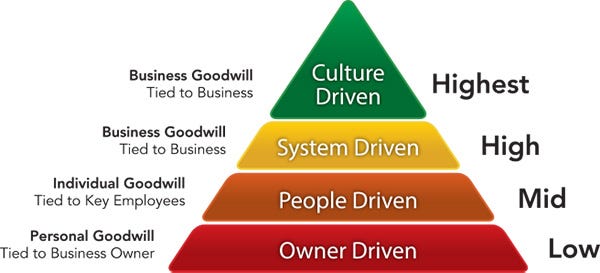
Hardly a day goes by without my coming face-to-face with the issue of business succession. Every banker, lawyer, accountant, and financial planner I know talks about it. Seminar after seminar deals with this issue, and all for good reason. After all, thanks to the baby-boomer generation, more than two thirds of independent Canadian business owners are planning to exit their businesses in the coming years.
But what we aren’t hearing about so much is who is going to buy these businesses. Certainly some will be picked up by competitors, some will be bought by managers, and some will be passed on to future generations. However, the grim reality is that the product of many an entrepreneurs’ blood, sweat and tears will simply cease to exist.
 To avoid this fate, many entrepreneurs have begun succession planning. And while planning of this kind is absolutely necessary, it’s also absolutely pointless unless the business owner truly understands what effective planning looks like for their business. In my experience, many don’t.
To avoid this fate, many entrepreneurs have begun succession planning. And while planning of this kind is absolutely necessary, it’s also absolutely pointless unless the business owner truly understands what effective planning looks like for their business. In my experience, many don’t.
Succession planning done right, requires that the business owner develop and execute a road map that proactively “productizes” his or her business into a self-sustained, truly valuable organization. Value. This is indeed an elusive word and one that is much more difficult to measure than the revenues, assets and profits we’re all used to reading on our financial statements. It is, however, the key to what makes a succession, successful.
So how do we identify and ultimately drive value? To answer this question, we first need to understand that a valuable organization is one that is independent of its ownership. Therefore, the goal of an effective succession plan must be to transform a business from an owner-reliant organization into a genuine investment. After all, as a potential buyer, which would you pay more for?
Consider the following concept I call the “value pyramid.”
It consists of four stages, or levels, of business development. As a business moves from one level to the next, risk is reduced, and the business takes a corresponding leap in value. The pyramid is designed to help a business owner, during the process of succession planning, consider the value of his or her business from the perspective of a potential buyer.

Level One: an owner driven business. In this type of business, the owner makes it all happen. Because this level of business is highly reliant on its owner, the risk of a business losing its profitability following a succession is highest.
Level Two: a people driven business. In this scenario, key people in the company, other than the owner, make the business happen. At this level, succession-related failure is reduced, but still plays a role due to the fact that the key people could leave, and thus take valuable information, and even customers, with them.
Level Three: a process driven business. This type of business is run by systems, which greatly reduce the risk of failure after a succession. At this level, systems are in place to ensure that operations continue according to plan, with or without the owner or key employees, so the business is set up fairly well to run itself. This type of business has more inherent value than the first two levels.
Level Four: a culture driven business. In this environment, the culture (driven by both people and systems) make the business happen. Level Four is considered as close to a pure “investment” as a business can come. Its culture indoctrinates new hires into an environment of continuous improvement, based on systems. The result is a “culture of excellence”. This type of business has the least chance of successionrelated failure, and is therefore considered the most valuable.
Once a business owner determines which of the four levels they are at, they can then move forward in developing and executing a succession plan that will get them as close to a culture-driven business as possible. You can start right now by asking yourself, “Am I ready to give up some of my control?” It’s a tough question for many entrepreneurs, but it’s impossible to move your business up the value pyramid without addressing it. Once you’re comfortable, however, you may be surprised at how quickly the value of your business will grow.
